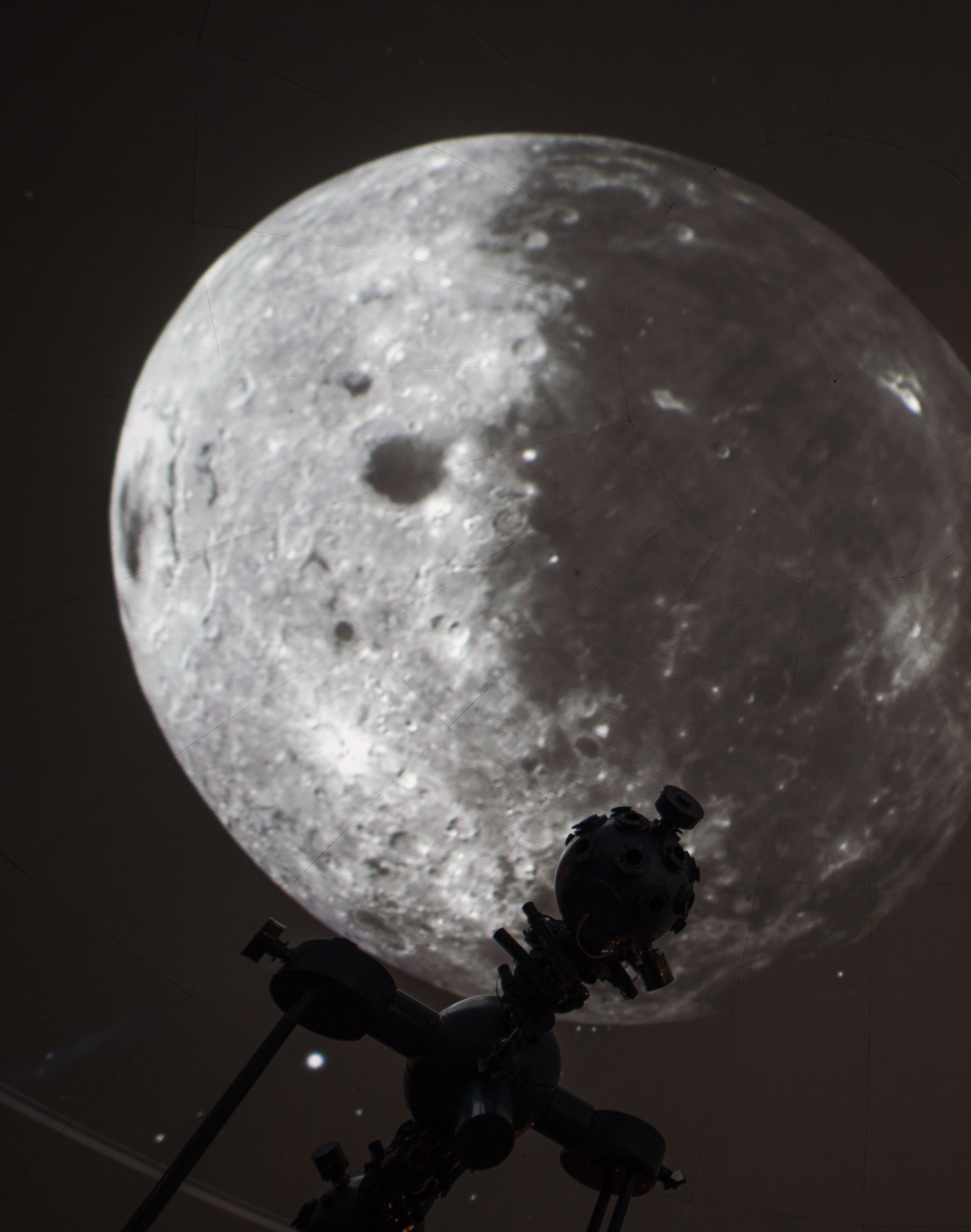By: Ben Theriault, Staff Writer
An overlooked resource on the USM campus is the Southworth Planetarium. On Monday September 17 I visited the planetarium to attend their double-feature presentation titled “Beyond the Arctic Circle” and “Aurora Storm.”
The Southworth Planetarium is located in the basement of the science building on the Portland campus. For the price of $5.50 for adults and five dollars for children and seniors, any of the featured shows can be seen. Edward Gleason, who runs the planetarium, emphasized that it’s free for USM students to attend presentations. On average the presentations have a duration between 30 and 45 minutes.
The show was a perfect balance between entertainment and education—the entire time the viewer is receiving new information yet it is delivered through a fluent and non-lecture style presentation. Surprisingly, the entire experience was far more cinematic than one might expect. Essentially the majority of the presentation was a movie projected throughout the spherical theater. This created a magnificent three-dimensional display allowing the viewer to truly feel like they were present in the tundra.
Every tree was meticulously placed at an angle that truly encouraged suspended-belief—as you look up from the base of the trees to see their distant canopies, it really feels like a walk in the forest. In most viewing experiences the movie-watcher is eye-level with all of the presented subjects, so the viewer is rarely presented with a viewpoint adequately relative to the actual sizes of the subjects. However, with this presentation, the viewer is not treated as a third-party observer, but rather an active element within the given environment. By depicting realistic sizes and correctly manipulating the artificial horizon, the viewer is entirely immersed in the atmosphere encouraging an unusually intimate learning experience.
The narrative of the show was established through a fictional conversation between grandfather and grandson. Together, the pair incorporated elements of folklore, science and drama to convey information about subjects ranging from ecology to astronomy. The shows analyze how plant and animal life manages to sustain in inhospitable climates as well as why the phenomenon of aurora borealis occurs.
Between shows, the audience is taken on a “star tour.” This is lead by the show’s host, Edward Gleason, the planetarium manager. During this tour he outlines major constellations and explains what can be seen in our current night sky. He explains when and where certain planets or constellations can be seen at this time in Southern Maine.
My time at the Southworth planetarium proved to me that it can offer a lot more than just information about astronomy and projections of stars. “Beyond the Arctic Circle” and “Aurora Storm” are two concise features that manage to showcase the complicated relationship between our planet and universe. Depicting both a terrestrial and cosmic perspective, Southworth Planetarium delivered a satisfying and well-rounded interpretation of the aforementioned subjects.
Throughout this academic year there will be other opportunities to view these shows amongst others. On September 20 at 1 p.m. and 21 at 7 p.m. there will be a showing of “Moons: Worlds of Mystery,” an exploration of the many moons in our solar system and the role that they play within it. On September 21 at 8:30 pm the show “Two Small Pieces of Glass,” an overview of the history of telescopes, will be featured. Laser shows will take place at currently unspecified times over winter break. The entire schedule can be found on the USM website under the “Planetarium” link.

